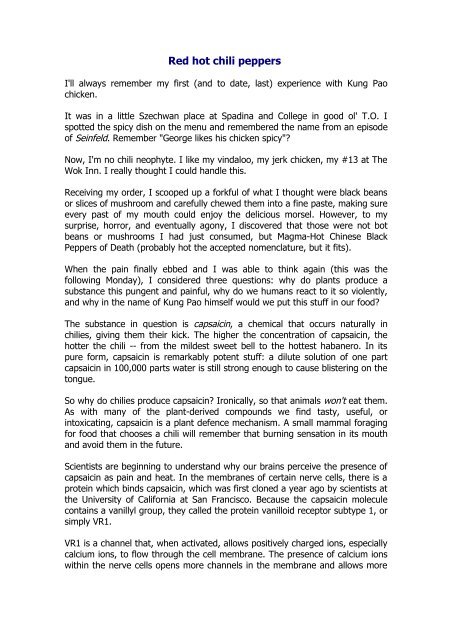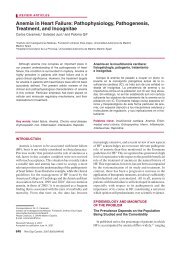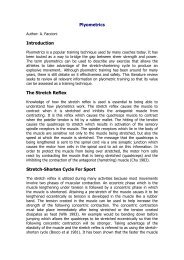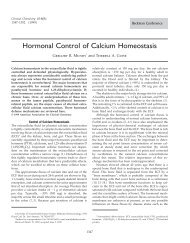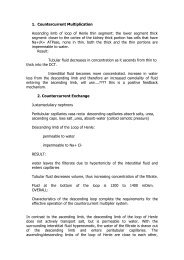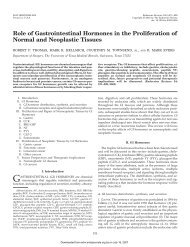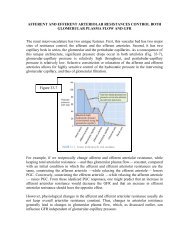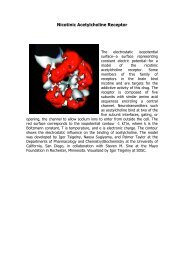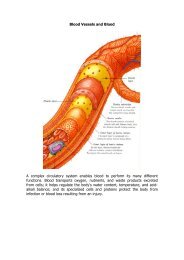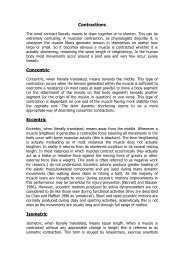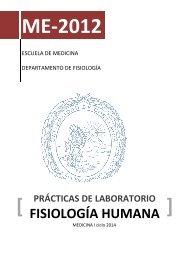You also want an ePaper? Increase the reach of your titles
YUMPU automatically turns print PDFs into web optimized ePapers that Google loves.
<strong>Red</strong> <strong>hot</strong> <strong>chili</strong> <strong>peppers</strong><br />
I'll always remember my first (and to date, last) experience with Kung Pao<br />
chicken.<br />
It was in a little Szechwan place at Spadina and College in good ol' T.O. I<br />
spotted the spicy dish on the menu and remembered the name from an episode<br />
of Seinfeld. Remember "George likes his chicken spicy"<br />
Now, I'm no <strong>chili</strong> neophyte. I like my vindaloo, my jerk chicken, my #13 at The<br />
Wok Inn. I really thought I could handle this.<br />
Receiving my order, I scooped up a forkful of what I thought were black beans<br />
or slices of mushroom and carefully chewed them into a fine paste, making sure<br />
every past of my mouth could enjoy the delicious morsel. However, to my<br />
surprise, horror, and eventually agony, I discovered that those were not bot<br />
beans or mushrooms I had just consumed, but Magma-Hot Chinese Black<br />
Peppers of Death (probably <strong>hot</strong> the accepted nomenclature, but it fits).<br />
When the pain finally ebbed and I was able to think again (this was the<br />
following Monday), I considered three questions: why do plants produce a<br />
substance this pungent and painful, why do we humans react to it so violently,<br />
and why in the name of Kung Pao himself would we put this stuff in our food<br />
The substance in question is capsaicin, a chemical that occurs naturally in<br />
<strong>chili</strong>es, giving them their kick. The higher the concentration of capsaicin, the<br />
<strong>hot</strong>ter the <strong>chili</strong> -- from the mildest sweet bell to the <strong>hot</strong>test habanero. In its<br />
pure form, capsaicin is remarkably potent stuff: a dilute solution of one part<br />
capsaicin in 100,000 parts water is still strong enough to cause blistering on the<br />
tongue.<br />
So why do <strong>chili</strong>es produce capsaicin Ironically, so that animals won't eat them.<br />
As with many of the plant-derived compounds we find tasty, useful, or<br />
intoxicating, capsaicin is a plant defence mechanism. A small mammal foraging<br />
for food that chooses a <strong>chili</strong> will remember that burning sensation in its mouth<br />
and avoid them in the future.<br />
Scientists are beginning to understand why our brains perceive the presence of<br />
capsaicin as pain and heat. In the membranes of certain nerve cells, there is a<br />
protein which binds capsaicin, which was first cloned a year ago by scientists at<br />
the University of California at San Francisco. Because the capsaicin molecule<br />
contains a vanillyl group, they called the protein vanilloid receptor subtype 1, or<br />
simply VR1.<br />
VR1 is a channel that, when activated, allows positively charged ions, especially<br />
calcium ions, to flow through the cell membrane. The presence of calcium ions<br />
within the nerve cells opens more channels in the membrane and allows more
calcium in, which, in turn opens still more channels. This positive feedback is<br />
the basis of the nerve impulse.<br />
So, when capsaicin is around, nerves fire. But, why does it feel <strong>hot</strong><br />
I recently spoke to Gerald Morris, Queen's professor and head of the<br />
department of biology. He explained that there is still more to learn about the<br />
relationship between capsaicin and the VR1 receptor. To explain, he drew an<br />
analogy between capsaicin and another group of compounds which have a<br />
remarkable effect on humans: drugs derived from opium, such as morphine and<br />
heroin, collectively called the opioids. "The obvious comparison is the opioids<br />
and the opioid receptors, where there are the drugs opium and its related<br />
compounds. When people looked in humans they found the endorphins."<br />
Endorphins are part of our natural pain suppression mechanism and are<br />
chemically similar to opium derivatives. Endorphins are the natural trigger, the<br />
endogenous ligand, for the opioid receptor, but opioid drugs will work too.<br />
But as Morris pointed out to me, "there is no known endogenous ligand for the<br />
capsaicin receptor." So, it seems that we react to a completely non-toxic<br />
compound, produced by certain plants -- with nothing chemically similar in our<br />
own bodies -- as if our gums are on fire. Something doesn't quite add up.<br />
"One idea," explained Morris, "is that this receptor is not only activated by<br />
capsaicin, it's [also] activated by heat." Indeed, the UCSF study showed that<br />
VR1 is sensitive to rapid increases in temperature, as well as to capsaicin. That<br />
would explain why spicy foods taste "<strong>hot</strong>" -- both capsaicin and heat trigger the<br />
same receptor.<br />
Incidentally, capsaicin doesn't just affect the tongue and lips. Any part of the<br />
body that has nerve endings is sensitive, including the entire skin surface, the<br />
length of the gut, and the eyes. Morris tells a story confirming that there are<br />
capsaicin receptors in our most delicate tissues. I won't recount the story here;<br />
let's just say that, for graduate students working with capsaicin, it is much more<br />
important to wash their hands before using the washroom than after.<br />
All of this still doesn't explain why we subject ourselves to suicide wings and<br />
prairie fires. There has been some suggestion that capsaicin and other spices<br />
have some preservative properties, which would explain why so much of the<br />
spicy fare originates in tropical countries where, until recently, no method of<br />
refrigeration was available. Morris, however, favours the explanation that we<br />
use spices because they enhance flavours. And it's not just humans who think<br />
so.<br />
"The was an animal study," Morris said, "where they gave rats plain food and...<br />
food which had quite a high dose of capsaicin in it. After a period [of a week],<br />
the rats were then given a choice. the ones that had had the spicy food --<br />
which was enough to cause them discomfort initially -- preferred it."
Certainly, capsaicin adds another dimension to an eating experience. Being<br />
odourless and tasteless, it stimulates parts of our mouths, and our brains, that<br />
blander food don't.<br />
Of course, no article on spicy food would be complete without the antidotes.<br />
What do you do if you've had too many Guatemalan Insanity Peppers<br />
You've probably heard that water will do more harm than good, and other than<br />
the cooling sensation of the water, it's true. Capsaicin isn't very soluble in<br />
water, so the best it can do is spread the heat around. Each spicy-food culture<br />
has its own remedy. The Thais suggest sugar and the Chinese prescribe rice.<br />
Carbohydrates do seem to absorb capsaicin or mask its effects. Indian<br />
restaurants offer a selection of yogurt-based drink and condiments to cool you<br />
down, and <strong>chili</strong> con carne and beer go very well together. Capsaicin is very<br />
soluble in both fats and alcohol.<br />
Theoretically, then, the best remedy for too many <strong>chili</strong>es would be a very rich,<br />
very strong white Russian, made with whole milk or heavy cream.<br />
I'll have to try that next time I dare to take on Kung Pao.<br />
John Bowman's mom doesn't like how all of his science articles end up<br />
mentioning booze.


